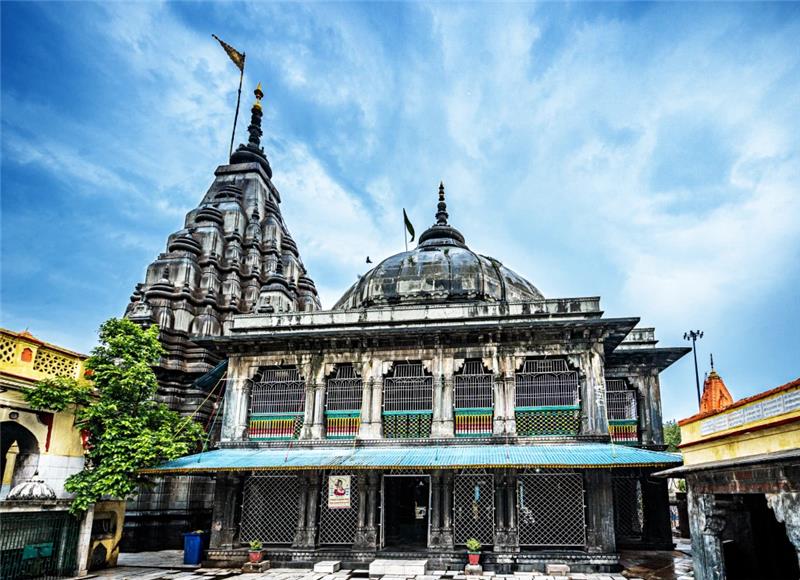
Gadadhara Temple, also known as the Adi Gadadhara Temple, is a highly significant temple revered for performing shraddhas and pind daan rituals. It is gracefully located on the banks of the sacred Phalgu river. This site is located on Mundaprista Hill, in the beautiful city of Gaya, Bihar.
Gaya is the sacred dham where Lord Sri Ramachandra, the 7th avatara of Lord Vishnu, performed the sacred ritual pind daan to give moksha for his father Dasharatha. This holy city holds immense significance as the site of this important ritual, underscoring its spiritual and cultural importance in Hindu tradition.
In this temple, Lord Vishnu is revered as Chatur Bhuja Narayana, the four-armed Deity of Lord Maha Vishnu, holding Shanka, Chakra, Gada and Padma.
He is worshiped as Gadadhara, the one who holds the Gada or Mace, which is why the temple is named Gadadhara Temple. Lord Vishnu wields the Gada to protect devotees as a symbol of courage.
This site holds profound significance in both Hinduism and Buddhism traditions. For Hindus, it is a major place of worship dedicated to Lord Vishnu, the god of preservation. For Buddhists, it is revered as the location where Lord Gautama Buddha attained enlightenment.
Sthala Purana of Gadadhara Temple
Gayasura, the son of the demon Tripurasura, was a devoted worshipper of Lord Vishnu.
Gayasura, the son of the demon Tripurasura, was a devoted worshipper of Lord Vishnu. Lord Shiva slew his father. To avenge the death of his father, he attacked Devaloka. After that, he went to Kolahala mountain in Kashmir and performed severe tapasya to appease Lord Vishnu. Indra and the other gods were greatly alarmed by this.
Lord Vishnu appeared before the demon Gayasura and inquired about the blessing he wished to receive. Gayasura requested Lord Vishnu that he should not be slained by the Trimurtis – Brahma, Vishnu and Maheshwar and whoever laid eyes on him would attain moksha, regardless of their previous sins.
Moksha can be achieved through the accumulation of good karma by performing righteous actions, engaging in selfless service, and adhering to the path of truth.
This created a huge imbalance in nature and a big headache for devatas. Worried by this, they sought a solution from Lord Vishnu.
Lord Vishnu advised the devatas to reach Gayasura and request him to give his body for performing yagna for 1000 years. In response, Gayasura readily consented and offered his body without hesitation. After some years, he could not tolerate the heat of the yagna kunda and hence was shaking his body, which disturbed the yagna.
Lord Vishnu pushed Gayasura beneath the earth using his right foot on his head. This footprint of Vishnu is revered greatly in the Vishnupada temple in Gaya.
But Gayasura felt very hungry, so he requested food from Lord Vishnu.
Feeling pity for Gayasura, Lord Vishnu granted him a boon: every day devotees would visit Gaya to offer Pind Daan (food offering) to their ancestors, which is a food for Gayasura. Offering food to one’s ancestors helps their souls progress toward attaining a place in heaven.
If food is not offered even for a single day, the demon Gayasura would emerge from the earth. There is not a single day where food is not offered. People come from all across the globe to offer pind daan.
Architecture of Gadadhara Temple
This small but remarkable temple is a blend of Nagara and Dravidan styles of architecture. Granite was the primary material used for the construction of the temple.
The structure of the Gadadhar temple is divided into three parts: Garbha griha (inner sanctum) and two mantapas (inner mantapa and outer mantapa). The Garbha griha (inner sanctum) enshrines the Vishnupada, where all rituals and worship are conducted here.
The inner mantapas are supported by 20 pillars, while the outer mantapas are supported by 21 pillars. Brick, stone, marble, and tile are the materials used for the construction of the temple.
Vishvarupa, the then ruler of Gaya, constructed this temple in 1058 CE. The present structure was reconstructed by Queen Aliyah Bai Holkar in 1787.
Festivals and Ceremonies of Gadadhara Temple
These festivals highlight the rich cultural and spiritual heritage of the Gadadhara Temple and the city of Gaya.
Chhath Puja: This is the major festival celebrated in the city of Gaya. It is dedicated to the worship of Surya Deva and Chhati Devi. Falls on the 6th day of Shukla Paksha in Karthika Maasa is observed by women who fast, even without drinking an ounce of water.
Vishnupada Mela: This fair, or mela, is held annually. Various religious activities, cultural programs, and stalls are kept attracting devotees all over the globe.
Pitru Paksha: During Pitru Paksha, which falls in the Bhadrapada masa, various rituals such as Shraddha, Tarpan, and Pind Daan are performed. It is observed by Hindus to honor their ancestors and help their souls attain moksha.
Makara Sankranti: This festival falls in the month of January, when the transition of the sun moves into the Zodiac sign Makara. Devotees immerse themselves in the river for holy dips and offer prayers at the temple. Along with this festival, Maghi Mela also takes place. A special sweet known as tilkut, prepared from sesame seeds and jaggery, is prepared.
Timings of Gadadhara Temple
The darshan timings of Gadadhara Temple are as follows:
Timings: 5:00 AM to 9:00 PM
Best Time to Visit Gadadhara Temple
The best time to visit this sacred pilgrimage site is between October to March. The temperature is very cool, making it ideal for a temple visit.
It is not advisable to visit this temple in summer as the temperature is extremely hot. This makes outdoor visits very difficult.
Nearby Places to Visit
Vishnupada Temple: It is also referred as Vishnupada Temple, dedicated to Lord Vishnu. It is located along the banks of the river Phalgu, Gaya, Bihar.
Sita Kunda: It is situated directly opposite the Vishnupada Temple. It is revered site where Sita Devi took a bath, and there is a small temple dedicated to her.
Akshaya Vata: This is the divine Banyan Tree that received a boon from Sita Devi, ensuring it will not perish even if the world ends.
Bodh Gaya: It is located in Gaya; it is the holiest pilgrimage site for Buddhists. This is the place where Buddha attained enlightenment under the Bodhi tree, or fig tree. It is a UNESCO World Heritage Site. It is one among the four important sacred dhammas for Buddhists: Lumbini, Sarnath, and Kushinagar.
Mangala Gowri Shakti Peetha: It is located in Gaya, one among the 18 Shakti Peethas, a place where the breast of Sati Devi fell. Dedicated to goddess Mangala Gowri, it bestows benevolence on women. In the Shravana maasa, Mangala Gowri Vrata is the major festival celebrated in this temple. It is observed on every Tuesday; women pray for the long life of their husbands.
River Punpun: Devotees perform pind daan on the banks of river Punpun as an act of reverence to their ancestors. The word punpun means again and again. In the spiritual sense, it is said that sins are removed again and again if we offer pind daan to the ancestors in the river.
How to Reach Gadadhara Temple
If you plan to visit the Gadadhara Temple and other sacred places, consider taking Tirtha Yatra’s World famed Ayodhya Kashi Yatra. All arrangements are well taken care of.
If you prefer to travel by yourself, here are a few options.
By Air: The nearest airport is Gaya Airport or Bodhgaya Airport. From here, you can hire a taxi or auto or take a bus route.
By Railway: The nearest railway station is Gaya Junction. From here, you can hire a taxi or auto. There are frequent buses available.
By Road: Gaya is well-connected to major cities like Bihar, Patna, Kolkata, Ranchi, Varanasi, and more. Even cabs or taxis can be hired from cities like Delhi, Kolkata, and Patna.
0
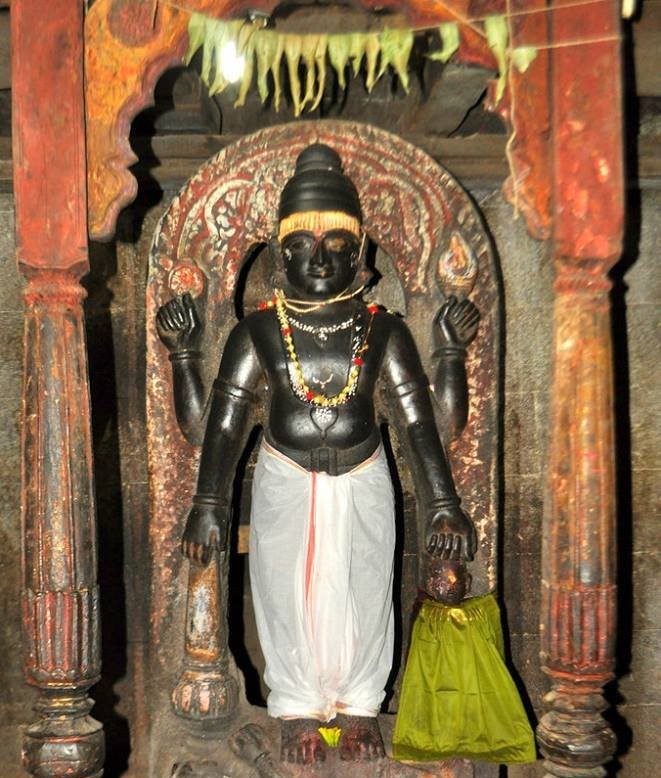
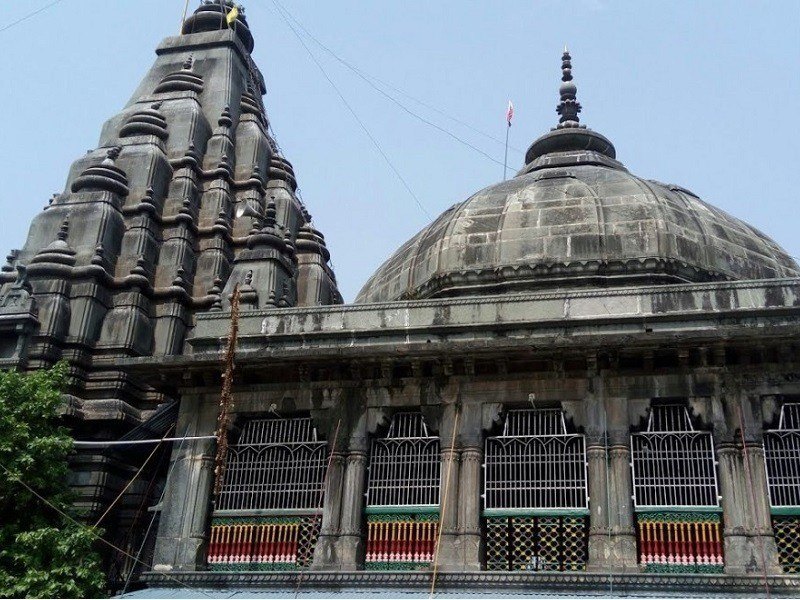

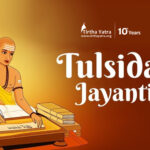
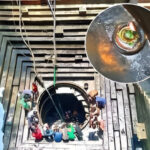
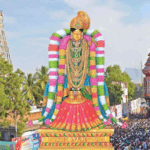


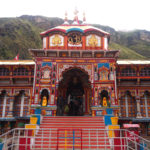
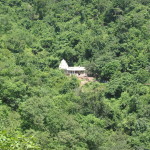
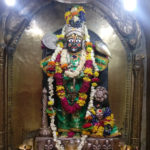
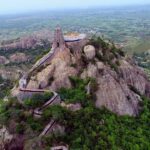
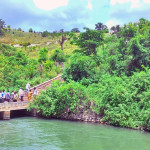
Leave a Reply